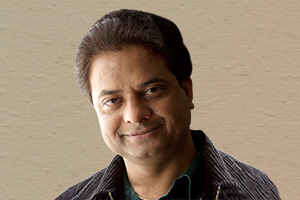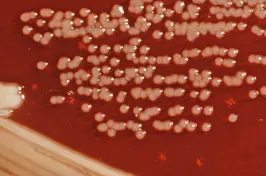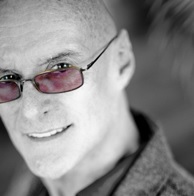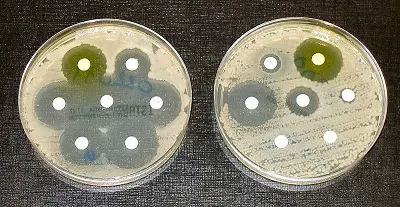|
TRANSLATE THIS ARTICLE
Integral World: Exploring Theories of Everything
An independent forum for a critical discussion of the integral philosophy of Ken Wilber
SEE MORE ESSAYS WRITTEN BY ANDY SMITH
This essay was written in July 2010 and is reposted with permission of the author.
WE ALL WANNA
CHANGE THE WORLD
A Scientific Analysis of the
Claims of Mahendra Kumar Trivedi
Andrew P. Smith
The mystic says: the ordinary world we live in is an illusion. There is a higher state of existence in which can know reality.
The scientist says: prove it!
Or as David Lane, a professor of philosophy and sociology at Mt. San Antonio College in southern California, suggests:
Why can't you produce something in our present state of awareness which would give us confidence that your claims are true?
 Mahendra Kumar Trivedi
Mahendra Kumar Trivedi
Lane, a sympathetic observer who claims to have experienced higher awareness himself, is not denying that it may have value. He's questioning whether it's anything more than a personal—or if one likes, transpersonal—experience, with no wider relevance to our understanding of the universe. If the mystic really does see a higher reality, let alone the only reality, shouldn't he/she be able to provide some evidence, in the form of phenomena observable by scientists?
The traditional response to this is that such evidence is impossible. Higher consciousness can no more be proven to those in the ordinary state than our ordinary waking state can be proved to someone who is fast asleep, or dreaming. Perhaps it would be better to leave it at that. But as science expands its scope, driven by the assumption that everything must have an explanation in material terms, some become tempted to accept this challenge.
A recent example is one Mahendra Kumar Trivedi, whose claim of “unique gifts” has caught the attention of integral philosopher Ken Wilber:
Mr. Trivedi has an empirically demonstrated capacity to alter the atomic and molecular structure of phenomena simply through his conscious intentionality. The number of experiments done on this capacity (known in Sanskrit as shaktipat) that have been done in coordination with Mr. Trivedi is quite extraordinary—so far, over 5,000 empirical studies by universities and scientific research organizations all over the world
Really?
Five thousand studies?
And none of them managed to find its way into, say, Pub Med, or Google Scholar?
So I went to Trivedi's website. There weren't five thousand publications listed, but there were seven (with promises of many more to come).
I looked at one of them, “Impact of an external energy on Yersinia enterocolitica [ATCC –23715] in relation to antibiotic susceptibility and biochemical reactions: An experimental study”, published in the Internet Journal of Alternative Medicine. Basically the same study was reported in a second paper published in the Journal of Accord Integrative Medicine. At the journal's website, it's stated that this is a peer-reviewed journal. The Editor-in-Chief, Gerhard Litscher, has published many standard, non-controversial studies, and appears at least superficially to be a scientist in reasonably good standing.
So far so good.
Blessing the Bugs
 Yersinia enterocolitica colonies growing on XLD
Yersinia enterocolitica colonies growing on XLD
So what exactly did Trivedi do? Y. enterocolitica is related to, but not as deadly as, Y. pestis, cause of the bubonic plague or black death. The study began with two sealed packages of the lyophilized (freeze-dried) bacteria. The contents of one pack were put into a tube and “revived”, i.e., cultured in some medium. No details given about the medium.
Mr. Trivedi then held the culture tube in his hand for a couple of minutes (0.5 to 3 minutes, it says), while “treating it through his thought intervention process by communicating and instructing the experimental object within the tube in order to undergo the change.” He did the same with the second, unsealed lyophilized package, after which its contents were also transferred for growth in medium. Following ten days of incubation, the bacteria were then analyzed in two ways:
- The minimum inhibitory concentration (MIC) of several antibiotics was determined on the bacteria. That is, the lowest concentration of each antibiotic necessary to inhibit bacterial growth.
- The identity or biotype of the bacteria was determined, that is, the specific types of sugars that it can metabolize.
These measurements were made on both Trivedi-treated and untreated or control bacterial cultures. Both types of measurements were made in an automated apparatus (Microscan Walkaway System) that is widely used by researchers who want to identify and determine the antibiotic resistance of various bacterial strains. Briefly, samples of the bacteria are inoculated into little wells that contain different concentrations of the antibiotic or one of the sugars. The faster the bacteria grow, the more turbid the medium becomes, and this turbidity is determined by absorption of a light beam passing through the well. The machine automatically processes all of these readings to determine the amount of bacteria in each well, and from these data in turn the machine can calculate the concentration of antibiotic necessary to achieve a certain inhibition of growth, as well as the effect of various sugars on growth.
The study reported that many of the treated bacterial samples became more resistant to antibiotics, more than a dozen different kinds of which were tested. (Why one would want to make disease-causing bacteria more resistant to antibiotics, rather than less resistant, is not addressed! Elsewhere, Trivedi's effect is described as “blessing”. Perhaps he was being compassionate to the bugs). Also reported was a change in the biotype of the samples, i.e., the pattern of sugars which they metabolized was changed.
You Can't Measure Control without Controls
From a methodological point of view, then, these studies are not even up to the standards of most research into the paranormal.
What does one make of a study like this? I have seen other studies of this kind, some at the institute where I work, where researchers—not professing any particular spiritual powers—pray or otherwise tender beneficial thoughts towards bacteria, or other forms of life. Some of these studies have found significant effects, and have been published. But they are never replicated at other labs, as far as I know. Data like these are sometimes obtained by chance, particularly if researchers, wanting to demonstrate an effect, select their best data. No tests of statistical significance were carried out, rather surprising for a peer-reviewed journal, I would say.
Most of the reported MIC data demonstrated a doubling of concentration, e.g., from 8 to 16 micrograms of antibiotic per milliliter, or from 16 to 32, when the bacterial cultures were handled by Mr. Trivedi. I am not familiar with the apparatus used here, but it appears that concentrations are only determined to multiples of four or eight. If this is the case, then basically the change amounts to moving the MIC from one level to the next highest level. So for example, a concentration of 7.5 would be recorded as 8, while one of 8.5 might be recorded as 16. This might make the reported changes, which are not that high to begin with, even smaller.
In order to carry out statistics, one generally needs to replicate an experiment, and this wasn't done. For example, each test of a particular antibiotic should have been carried out on a minimum of three different samples, and the mean and standard error of the three results (MIC) compared with the mean and standard error of the controls. Lacking that, there is no way to determine whether a change from, for example, a MIC of 8 in the control to 16 in the treated is significant.
 "Mr. Trivedi has an empirically
"Mr. Trivedi has an empirically
demonstrated capacity to alter
the atomic and molecular structure
of phenomena simply through
his conscious intentionality."
Read more...
The authors do not say but presumably intend to imply that since differences between control and treated were observed for more than a dozen different antibiotics, this result must be significant. But since each antibiotic constitutes a different condition, it's difficult to apply a rigorous statistical test to these results. This goes back to what I said previously about selecting the best values. It's possible that multiple experiments were run with each antibiotic, but the results of only one, presumably the one with the greatest difference, are shown. If it seems unfair of me to suggest this, this is precisely why running replicates with each antibiotic is so important–it's the way to avoid this criticism.
I don't know what to make of the biotype data. They just seem weird, with almost all of the sugars now positive, that is, metabolized. Multiple changes in the cell's metabolism would have to occur. These results really don't engender a lot of confidence in the results, for me. (Not that I had any to begin with, but I'm trying very hard to approach this study neutrally).
A thorough study would want to do more controls. In addition to replicate samples, for example,
- vary the amount of time the sample is treated;
- vary the amount of time between treatment and analysis;
- have the sample treated by people other than the person having the supposed effect;
- try to achieve the opposite effects, i.e., make the bacteria more sensitive to antibiotics.
Again, I'm surprised the journal would accept such a superficial look at the phenomenon.
From a methodological point of view, then, these studies are not even up to the standards of most research into the paranormal. Most, or at any rate, many investigators of the paranormal make a great effort to adhere to standard scientific protocol. They focus on a single phenomenon, study it in a carefully controlled manner, use blind methods where possible and appropriate, and perform statistical analysis on the results. All of these basic methodologies are lacking or performed in a substandard manner in Trevedi's studies. Indeed, he has taken a scattershot approach, claiming to have carried out a great many studies in genetics, microbiology, materials science, and agriculture, among others.
Beyond Sci-Fi
This study is based on wishful thinking — literally as well as figuratively.
The biggest problems I have with this study, though, are conceptual. Like so many attempts to prove the existence of the paranormal, this study is based on wishful thinking—literally as well as figuratively. Sure, it would be nice to wish that something could happen, and have it happen (every five year old's dream), but everything we know about the physical world indicates it doesn't work that way.
What exactly was Trivedi supposed to be doing that resulted in increased resistance of the bacteria to antibiotics? When the article says that he was “communicating and instructing” the bacteria, I assume it is not meant that the cells and their molecular processes could respond to intelligent communication; presumably, the results are supposed to demonstrate that Trivedi manipulated certain phenomena by applying energy to them (though even this is never made explicit in the paper). But even supposing Trivedi could harness and focus some form of energy, this energy wouldn't change the bacteria's antibiotic resistance. It might kill them, or make them grow abnormally, but antibiotic resistance involves very specific genetic changes. No such changes are demonstrated in the paper, though Trivedi claims to have carried out other studies in which he has changed gene sequences (like most of his other studies, these are briefly described on his website in a sentence or two, but do not appear in a listed publication.) How could energy manipulation accomplish this?
 Antibiotic resistance tests: The bacteria in the culture on the left
Antibiotic resistance tests: The bacteria in the culture on the left
are susceptible to the antibiotics contained in the white paper discs.
The bacteria in the culture on the right are resistant to most of the antibiotics.
The development of antibiotic resistance by bacteria is a very well-known phenomenon. A spontaneous mutation occurs in some gene which confers some resistance, and since the resistant bacteria have a survival advantage, they grow and reproduce more readily in the presence of the antibiotic than do bacteria lacking the mutation. In this small-scale manifestation of Darwinian selection, they take over the colony, so that soon all the bacteria express the mutation. According to well-established theory, whether this mutation occurs or not is a purely random event; it doesn't depend on whether the antibiotic is actually present (there are some studies by researchers that suggest that isn't always the case, but I won't get into that here). So mutations for antibiotic resistance are always appearing in bacterial species, but most of them die out, since they have no adaptive value.
So Trivedi would not have had to induce the right mutation in one of the bacteria—or even assuming he somehow did, that would not have been sufficient. What he would have had to do is create the conditions for the mutation to spread in the bacteria. We can't begin to imagine a scenario explaining this. Inducing a specific mutation in a bacteria seems impossible enough—no machine in the laboratory can do it, that's why these mutations are called random or spontaneous—but at least we could conceive, in a sci-fi way, of beaming energy precisely on the right nucleotide to create the right mutation in the right gene. But why would this mutation then spread if there were no antibiotic in the medium? What would select it? One of Rupert Sheldrakes's morphogenetic fields? The only alternative, even further out, is that Trivedi induced the mutation not just in one bacterial cell, but in all the teeming millions of them, simultaneously. It is virtually inconceivable that this could be done in any kind of scientific experiment, even in a sci-fi scenario.
In other words, there is no attempt in the paper to explain the results in terms of current scientific theory—on the contrary, the authors seem to think the fact that no theory can possibly explain them is some kind of recommendation: “These results cannot be explained by current theories of science, and indicate a potency in Mr.Trivedi's energy…” Yet if he is claiming physical effects, there has to be a link somewhere with physical theory, and even a minimal theory base is lacking.
No attempt even to recognize, let alone engage with, these issues is made in the paper.
No attempt even to recognize, let alone engage with, these issues is made in the paper. It's basically just, this is what we found, believe it or not. I understand this is a preliminary study, but given how radical this finding is, it demands a far more thorough analysis even before publishing. The paper reads more like a quick-and-dirty study that can be referenced to prop up Trivedi's grandiose claims. It's very telling that he is apparently making claims in all kinds of other fields—materials science and agriculture, for example—rather than taking the scientifically far more astute approach of focusing on a single phenomenon and exhaustively studying it.
So there are really three huge leaps of faith here:
- that a human being can harness energy and focus it on cells in culture;
- this energy, unlike any form known to science, can have very specific molecular effects on these cells;
- these effects are propagated to—or impacted initially on—every single one of the millions of these cells.
The same criticism can be made of the other papers listed at his site, in materials science, where he claims to have altered the physical structure of several elements. I haven't looked at these in detail, but it's the same basic claim. On the one hand, he wants to claim that he is emanating energy that has specific physical effects, which by definition makes it physical. On the other hand, he wants to claim that it can do things that physical energy has never been shown capable of doing.
References
Trivedi, M. & S. Patil. Impact of an external energy on Yersinia enterocolitica [ATCC -23715] in relation to antibiotic susceptibility and biochemical reactions: An experimental study. The Internet Journal of Alternative Medicine, volume 6, number 2. http://ispub.com/IJAM/6/2/5464
|
 Andrew P. Smith, who has a background in molecular biology, neuroscience and pharmacology, is author of e-books Worlds within Worlds and the novel Noosphere II, which are both available online. He has recently self-published "The Dimensions of Experience: A Natural History of Consciousness" (Xlibris, 2008).
Andrew P. Smith, who has a background in molecular biology, neuroscience and pharmacology, is author of e-books Worlds within Worlds and the novel Noosphere II, which are both available online. He has recently self-published "The Dimensions of Experience: A Natural History of Consciousness" (Xlibris, 2008). 


